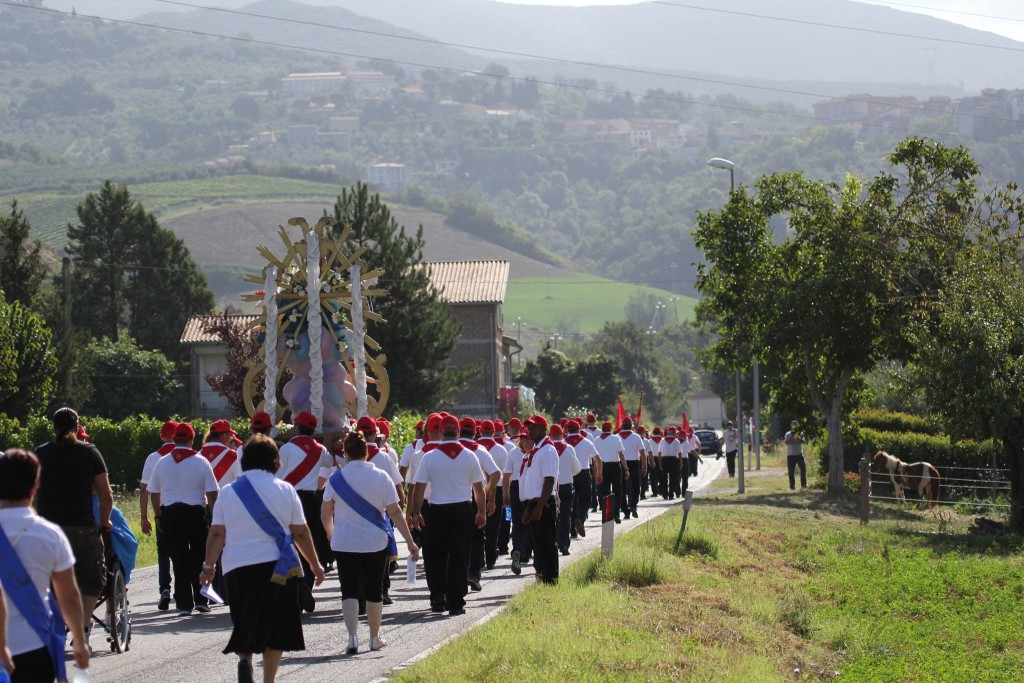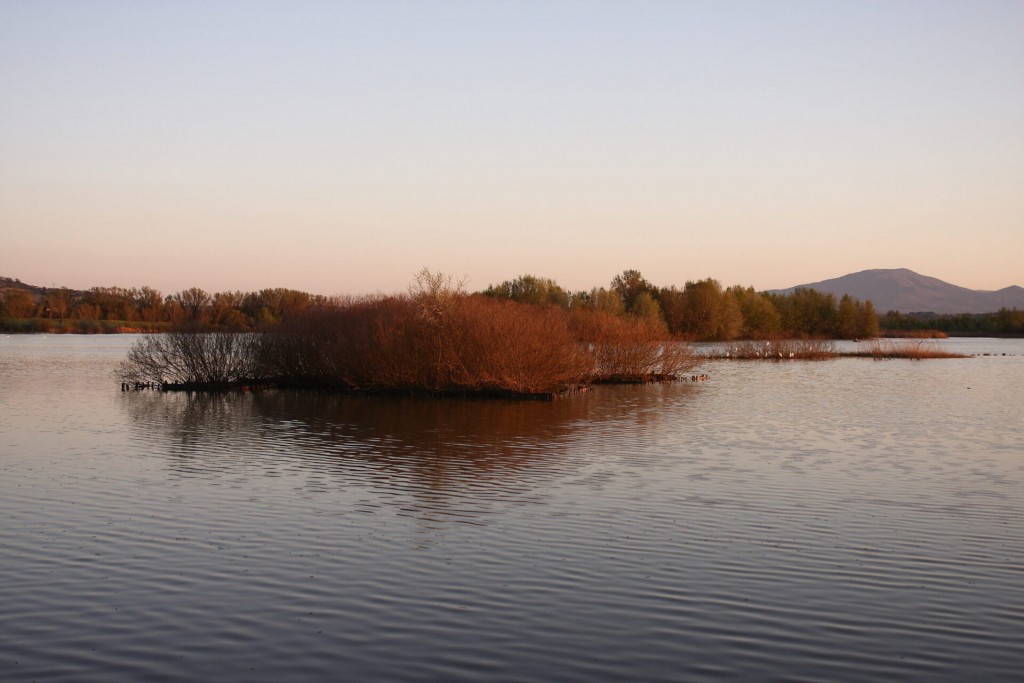Art and culture
Legends and Traditions
August 15th. Patronal feast of Santa Maria Assunta
A festival of ancient origins. The archival documentation gives us the description of the festival since the sixteenth century. Originally the festival was held on 14 and 15 August and particularly important was the religious procession that took place on the evening of 14 August. Therefore, the cult of St. Mary, to whom the parish church is also dedicated, is deeply felt by the Alviano community.
January 5th. "La Vecchiarella"
The first consisted of going from house to house "begging for the dead": throughout the month of November the boys went around the village knocking on the various doors and asking for eggs, cheese and bread in exchange for prayers to be recited in the family. The tradition ended with the Second World War, but for some years it has been resumed with the traditional tour of the Vecchiarella, which takes place in the afternoon/evening of January 5 of each year. It consists of a group of singers who go house to house and collect offerings for the souls in purgatory. The singers are led by an "old woman" who according to tradition wants to be a man dressed as a woman. The collection of offerings is characterized by a song of ancient origin that is recited at home to the sound of an accordion and which describes the brevity of life and death to which we are all destined. The origin of begging is actually very ancient. It most likely originates from the rites that pre-Christian populations dedicated to the winter solstice, therefore to the end of the solar year and the arrival of the new year. Christianity then reshaped these rites giving them a different meaning.
October 4th. Patron Saint Francis of Assisi
St. Francis of Assisi has been co-patron saint of Alviano for some years. The cult of St. Francis is deeply felt in Alviano and is of ancient origin. In 1212 Francis operated here in Alviano the "miracle of the swallows" as reported in the biography of the saint written by Tommaso da Celano. Inside the castle there is a chapel that is decorated with frescoes dedicated to the life of the Saint of Assisi. The archival documentation gives us back a devotion present in the community since 1400. For a few years now, the feast of St. Francis of Assisi has hosted an event dedicated to choirs from various cities in Umbria and Lazio who perform songs of medieval origin inside the castle.
The legend of Bartolomeo d'Alviano in the Castle of Aviano
The story that sees Bartolomeo d'Alviano as the protagonist is much more recent. Around 2014, the Castle of Alviano was affected by some "paranormal" experiments. The Giap (Paranormal Activity Investigation Group) of Rome, accompanied by a medium, visited the Castle in search of "invisible" guests. Thanks to thermal imaging cameras and some special instruments, used in these experiments, it was possible to demonstrate that some anomalies occur in this place.
In Bartolomeo's rooms, for example, it was possible to immediately detect a presence, a figure in military clothing who wandered around the rooms. The presence of some children and the coarse laughter of a woman were also detected. Could it be Pimpaccia?
The Legend of Donna Olimpia
The stories of Olympia, called Pimpaccia, and Luciola are closely linked. One could almost say that they represent two sides of the same coin. Olimpia Maidalchini, a Roman noblewoman of the 1600s, married a member of the Doria Pamphili family, a family that for a long time owned the Castle of Alviano. By marrying, Olympia inherited this fortress and transformed it in her own image and likeness. Not only in appearance and furnishings but, above all, in customs and traditions. It is said that Olympia was a dissolute, greedy woman, given to wickedness and the pleasures of the flesh. Her conduct earned her the nickname of Pimpaccia, a name elaborated by Pasquino himself who, in his poems and stornelli, said of her: "Who says woman, says damage, who says female, says sickness, who says Olimpia Maidalchina, says woman, damage and ruin". Like any noblewoman, Olimpia had some faithful ladies-in-waiting at her side, among them, Luciola. The young Luciola was in love with Tommaso di Gramiccia, known as Ramicciaro. Her love was reciprocated, Tommaso felt the same feelings for her, but someone, on purpose, stood in the way of their love. Donna Olimpia, jealous of the attention reserved for her lady, revealed to Tommaso that Luciola also reserved the same attention for another knight. Upon meeting him, he dropped a handkerchief, a clear invitation to pick it up and return it. The young Thomas then followed the noblewoman to her private rooms, where he was fed with every delicacy. The dinner had a foregone conclusion and the two spent the night together, in Donna Olimpia's room. Once discovered, Olimpia accused Thomas of having entered her rooms against his will and the young man was thrown into the basement where he was pierced by some blades and slowly died. Luciola was never told this secret and waited for Thomas in vain, for many years. It seems that the same end of Thomas was reserved for several young people and, for this reason, Donna Olimpia is remembered for her wickedness. Many years later, some restorations, which took place mainly in the dungeons and basement of the Castle, brought to light a large number of bones and sharp blades. That's why not everyone in Alviano is convinced that it is just a legend.
The legend "Il Pian della Nave"
Once upon a time... a ship. Or rather, a bumpy boat on board which the Etruscans had already faced the Umbrians for the conquest of the lands on both sides of the Tevere.In the following, the threat of conquest by the Romans had led the Etruscans and Umbrians to unite to defend themselves from the common enemy: on the right bank the Etruscans from Orvieto, Viterbo, Bracciano and the surrounding hills, on the left the Umbrians, coming from Interamna (Terni), Amelia, Narni etc. The meeting was where Lake Alviano ends today, at the height of the dam, where even at the time the river made a jump: there the Romans, who had gone up the Tiber from Orte, were waiting for the boat overloaded with local fighters, which unfortunately ran aground among the mud and the junks. The battle was terrible, a real carnage on both sides, but the victory of the Romans was soon evident and immediately the cries and cries of old people, wives and children who had seen their loved ones die, but also their independence and their homeland, rose from the banks of the river. And so, even today, that battle and that place are remembered as the "cry of the ship", and the area is called "Pian della nave".
News
2024, November 12
A new pictorial cycle has been discovered inside the castle of Bartolomeo di Alviano and Donna Olimpia Pamphilj. The municipal administration made the announcement, referring to the discovery of the restorer Simone Deturres, who the Municipality has given the task of working on the frescoes, which could tell something new about the palace that belonged to the captain of fortune. Following surveys completed last December, new figures have emerged that shed further light on the pictorial works contained in the precious building of Alviano, whose frescoes have been among the major tourist attractions for years for those who come to visit the castle.
“Following maintenance work on the current library, we saw traces of what we thought was a fresco appear on a wall,” reports Mayor Giovanni Ciardo. “Given the value and expressive power of the other frescoes in the other rooms of the Castle,” he explains, “we thought it was right to go and investigate.” Consequently, the task was given to the cultural heritage restorer Simone Deturres who says: "I thought I would discover little more than a coat of arms above a fireplace and instead there is a pictorial cycle, all to be recovered. I carried out nineteen surveys which confirmed the presence of an extensive pictorial apparatus, similar to that of the other rooms of the Castle".
Deturres speaks of "a rather serious situation due to the effect of many concomitant factors. I can assure you however that under the plaster there is at least 60 percent of what were the original frescoes that can be recovered". The restorer adds: "we cannot yet know for what reasons they were covered, perhaps because they were damaged or because they depicted something embarrassing. Only by uncovering the scrolls and the entire fresco, as in the other rooms, will we understand more". The Castle currently has three frescoed rooms: the Unicorn Room, the Star Room and the Phoenix Room. In these frescoes, whose dating varies between 1518-1519 and 1537, symbols, Roman myths, and family crests intimately linked to the figure of Bartolomeo d’Alviano are intertwined.
Nadia Bagnarini, an art historian who edited a recent publication entitled “The castle of Alviano and its iconographic apparatus. The triumph of the Liviani dynasty”, states: “at first glance, the newly discovered frescoes are certainly part of a very complex cycle and require immediate restoration to preserve them, for the purpose of protection, enjoyment and enhancement. The figure of the bearded character (presumably a Triton), which resurfaced in one of the tests carried out, is very interesting, notable for its brushstrokes and anatomical rendering. Even more captivating is the refined image of the Nereid behind him, riding his tail. I have doubts about the painter's hand being the same as the one who painted the frescoes in the other rooms, but nothing can be ruled out, while we wait for the restoration to reveal the rest".The surveys are now complete.
Deturres' report calls for an in-depth restoration to recover the entire painted surface and hypothesizes a new passage connecting the rooms that has not yet been explored. "We are curious to discover what those plasters hide - continues Mayor Ciardo - the frescoes in the other rooms are the heart of the guided tours in the Castle and are very successful". The complex of frescoes in the Castle has also inspired a Mexican illustrator who has created a pictorial path called "Path of the Unicorn", near the village of Alviano. "Now we have to get to the bottom of it and discover what other stories are hidden behind those plasters, hoping that humidity, time, the hand of man, have not done too much damage.
Maybe we could discover other beautiful rooms like the Sala della Stella” the Mayor recalls. “This room – he adds – recalls the hope of a father, Bartolomeo di Alviano, to see “his star renewed”, his history, his greatness. “Of course, we are only at the beginning. A significant commitment is needed, both in terms of time and money. But now that we have begun to see so much beauty – Ciardo concludes – we will try all the ways to give this town one more reason to rediscover itself and be discovered”.










